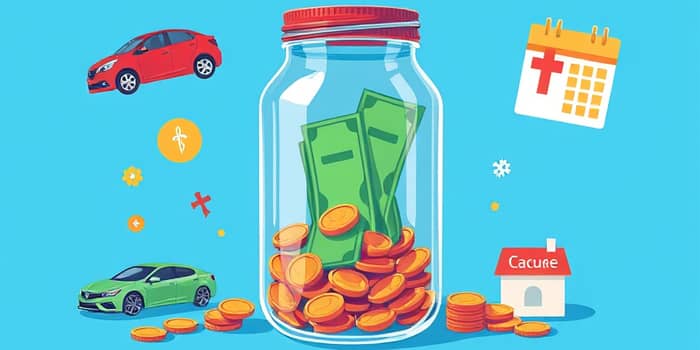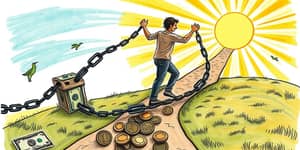
Building a financial safety net can feel daunting, but with a clear plan and steady progress, you can weather any storm.
An emergency fund is a dedicated savings reserve designed to cover unexpected financial challenges. It acts as a buffer against sudden income loss, medical emergencies, or urgent repairs, helping you avoid going into debt and maintain peace of mind.
By setting aside funds specifically for emergencies, you empower yourself to respond swiftly and decisively when life throws curveballs your way.
Experts typically recommend saving between three to six months' worth of essential living expenses. To calculate your personal goal, follow these steps:
For example, if you spend $2,500 on essentials each month, you should aim for a fund between $7,500 and $15,000. A household with $5,000 in monthly essentials may start with $2,500 for short-term shocks and build toward $15,000–$30,000 to cover extended income disruptions.
Use this table to assess whether you should aim for the lower end or push beyond six months—freelancers, contractors, and those in volatile industries may consider up to nine months of expenses.
Facing a six-month goal can feel overwhelming. Break it down into smaller, achievable targets:
Celebrating each milestone reinforces positive habits and keeps you motivated on the long journey.
Your emergency fund is meant to be used when genuine crises arise. Viewing withdrawals as failures can hinder your financial resilience. Instead:
Remember that using your emergency fund is a sign of prudent planning, not defeat. The goal is to protect your overall financial health when the unexpected occurs.
Emergency funds typically cover two categories:
By distinguishing between these scenarios, you can better gauge how quickly you might need to access your savings and plan accordingly.
Despite widespread advice, many households remain underprepared. The median U.S. household savings balance is only $8,742—far below the three to six months benchmark. Nearly 56% of adults cannot cover a $1,000 emergency with savings alone. Younger adults (18–29) are particularly vulnerable, with only 39% meeting the three-month threshold, compared to 69% of those over 60.
In times of economic downturn or high unemployment, aim for the higher end of the range. Extending your cushion to nine months can mean the difference between stability and financial distress.
There is no one-size-fits-all target for an emergency fund. Your ideal amount depends on your unique circumstances—income stability, family responsibilities, health costs, and access to additional resources.
By setting clear goals, monitoring your progress, and adjusting for life’s variables, you can build a robust emergency fund that offers lasting financial security. Start today, stay consistent, and embrace the confidence that comes from knowing you’re prepared for whatever the future holds.
References













